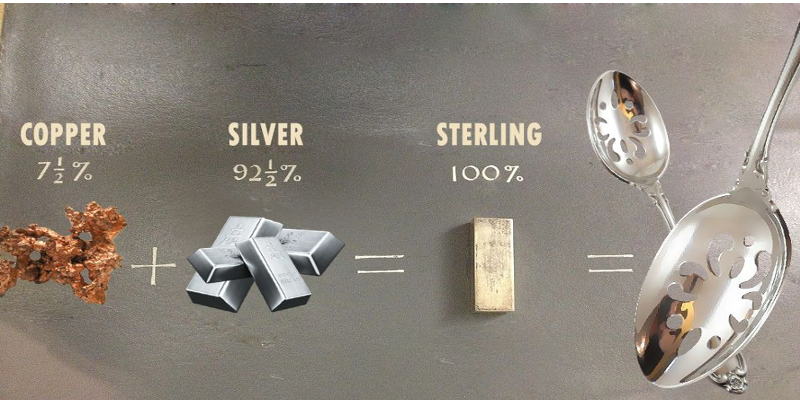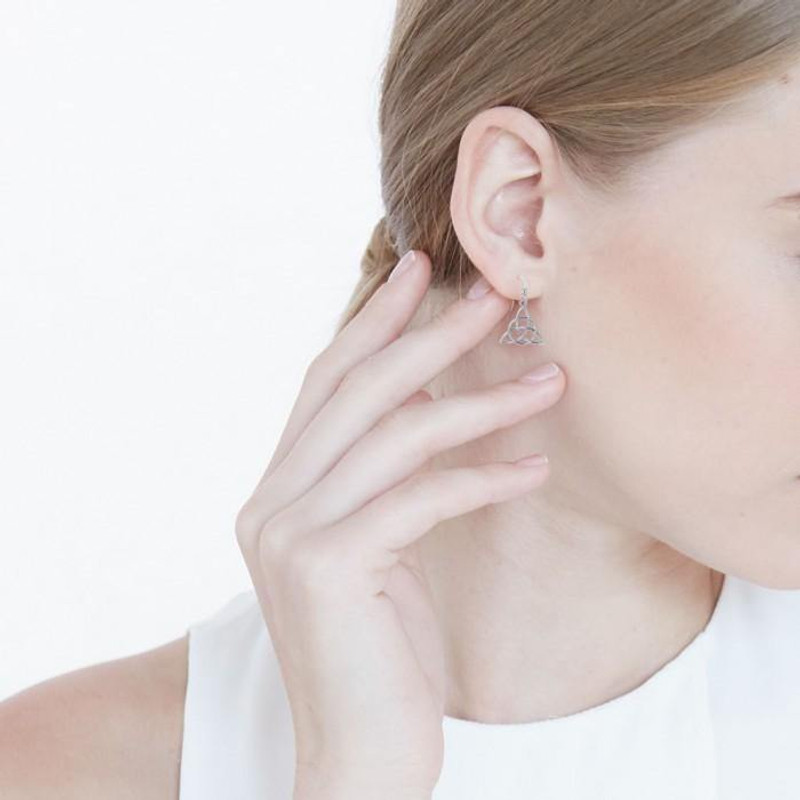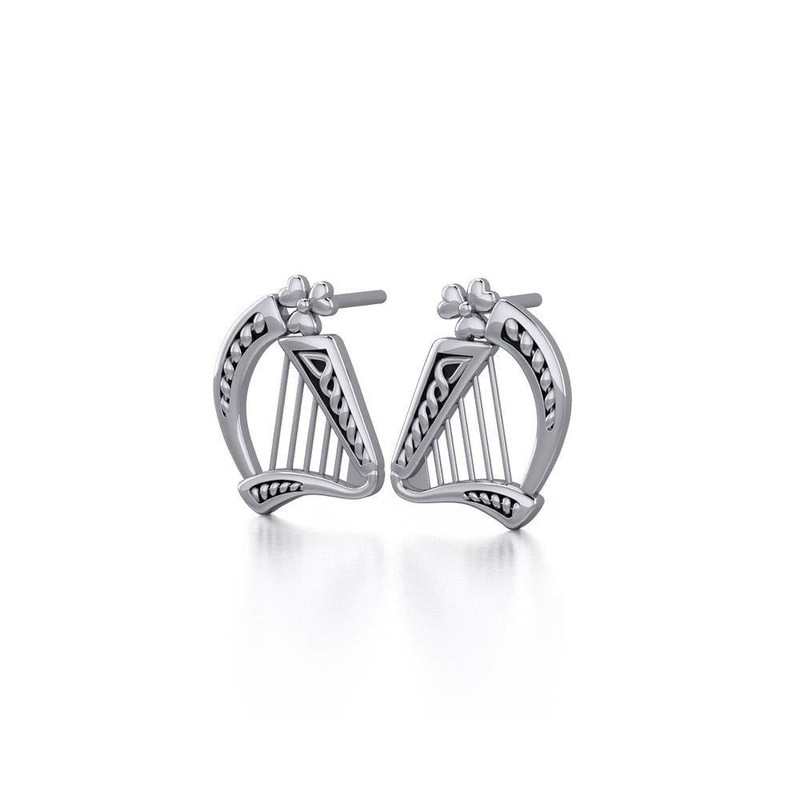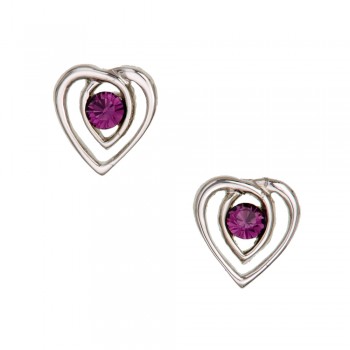




What is 925 Sterling Silver? It is often simply referred to as Sterling Silver. It is a popular and valuable metal used in jewellery, flatware, and various decorative items. Here are some key facts about 925 Sterling Silver.
Hallmark: Authentic Sterling Silver items are typically stamped with a hallmark or 925 to indicate their purity. This hallmark is a legal requirement in many countries and helps buyers identify genuine Sterling Silver.
Sterling Silver has a bright, shiny appearance that can closely resemble white gold.
Tarnish: Sterling Silver can tarnish over time when exposed to air and moisture. This tarnish appears as a dark patina or discoloration on the surface of the silver.
Sterling Silver is generally hypoallergenic, making it suitable for people with sensitive skin. However, some individuals may still be sensitive to the small amount of copper in the alloy.
While Sterling Silver is more durable than pure silver, it is still softer and more malleable than other metals like stainless steel. This means it can be prone to scratches and dents if not properly cared for.
Jewellery Making. Sterling Silver is commonly used in making various types of jewellery, including rings, earrings, necklaces, bracelets, and more.
Versatile Design. Sterling Silver’s neutral color and luster make it suitable for both contemporary and classic jewellery designs. It complements a wide range of gemstones and materials.
Care and Maintenance. Regular cleaning with a soft cloth or silver polish can help remove tarnish.
The value of Sterling Silver is determined by its weight, craftsmanship, and market demand. It is generally more affordable than gold or platinum, making it an attractive option for those looking for high-quality jewellery without the high price tag.
Antique and Vintage. Sterling Silver is often featured in antique and vintage jewellery and collectibles, such as tea sets, flatware, and decorative items, which can hold both historical and intrinsic value.
Sterling Silver standards and hallmarks may vary by country. For example, in the United States, the legal standard for sterling silver is 92.5% pure silver, but other countries may have different standards.
Overall, 925 Sterling Silver is a popular choice for jewellery and decorative items due to its combination of beauty, affordability, and durability. It has a timeless quality and can be passed down through generations when properly cared for.
925 Sterling Silver chains are popular jewellery components used to create necklaces and other accessories. These chains come in various styles, lengths, and thicknesses to suit different preferences and fashion trends. Here are some key aspects to consider when it comes to sterling silver chains:
This is a classic and straightforward chain consisting of uniformly sized oval or round links connected in a simple and clean design.
The Figaro chain features alternating long, oval links followed by short, round links, creating a distinctive and stylish appearance.
Box chains consist of square links, which give them a more geometric and uniform.
Rope chains are made up of intertwined metal segments that resembles an actual rope. They are often quite durable and suitable for heavy pendants.
Singapore chains have a series of small, twisted links, which create a delicate, elegant, and somewhat sparkly effect.
Snake chains have a smooth and flexible surface, with a series of small, tightly interlinked, wavy metal plates, giving the appearance of a snake’s skin.
Bead chains consist of small beads or balls linked together to form a continuous chain. This style is delicate and often used with lightweight pendants.
Curb chains feature flat, slightly twisted links that are often larger and more substantial in appearance.
Length. Sterling Silver chains are available in various lengths, ranging from choker-length (around 14-16 inches) to extra-long chains that can reach 30 inches or more. The choice of length depends on personal style and the type of pendant or necklace you wish to wear.
The thickness or gauge of a Sterling Silver chain can vary widely. Thinner chains are delicate and suitable for lightweight pendants, while thicker chains provide more durability and are ideal for heavier pendants.
Chains typically come with various types of clasps, including lobster clasps, spring ring clasps, and toggle clasps. The choice of clasp depends on personal preference and ease of use.
Many people choose to pair Sterling Silver chains with pendants or charms to create a unique and personalized necklace. The type of chain can influence the overall aesthetic of the pendant.
Care. Like all sterling silver jewellery, Sterling Silver chains can tarnish over time due to exposure to air and moisture. Regular cleaning and proper storage can help maintain their luster. Using a soft cloth or a specialized silver cleaning solution can remove tarnish.
It’s important to ensure that you are purchasing genuine Sterling Silver chains. Look for the “925” hallmark or other authenticity markings to verify their quality. Sterling Silver chains offer a versatile and timeless option for accessorizing. The choice of chain style, length, and thickness depends on individual preferences and the intended use of the necklace.
When Sterling Silver stud earrings come into contact with the human body, various reactions and effects may occur, depending on individual factors and sensitivities. Here are some common reactions and considerations:
Sterling Silver jewellery, including stud earrings, can tarnish over time due to exposure to air and moisture. This tarnish appears as a dark patina on the surface of the silver. It is a normal chemical reaction, and it does not harm the metal or pose any health risks. Regular cleaning with a soft cloth or silver polish can restore the earrings’ shine.
Some individuals may experience allergic reactions when wearing Sterling Silver stud earrings, especially if they have sensitive skin. Symptoms of an allergic reaction can include itching, redness, and irritation around the earlobe. In such cases, hypoallergenic earrings made with different materials, like surgical stainless steel or nickel-free options, may be a better choice.
In rare cases, the interaction between the metal in Sterling Silver and the individual’s skin chemistry may cause temporary skin discoloration, leaving a greenish or grayish tint on the earlobe. Keeping the earrings clean and dry can help reduce the likelihood of this reaction.
The use of personal care products such as lotions, perfumes, and hair sprays can affect the appearance and longevity of Sterling Silver earrings. These products may contain chemicals that can accelerate tarnishing or cause adverse reactions, so it’s advisable to apply them before putting on your earrings.
Gently wiping the earrings with a soft, non-abrasive cloth and storing them in an airtight container or a ziplock bag when not in use can help extend their lifespan.
When purchasing Sterling Silver stud earrings, it’s essential to ensure that you are buying authentic Sterling Silver with the 925 hallmark.
Reactions to Sterling Silver stud earrings are typically mild and manageable, with tarnishing being the most common issue. If you experience any discomfort or skin irritation while wearing sterling silver earrings, consider switching to hypoallergenic materials or seeking guidance from a dermatologist or an allergist to identify the specific cause of your reaction.
Titanium is a popular material for earring studs and stems due to its unique properties and benefits. Here are some key features and advantages of titanium earring stems:
Titanium is considered one of the most hypoallergenic materials available for earrings. It is an excellent choice for individuals with sensitive skin or metal allergies, as it rarely causes allergic reactions or skin irritations.
Titanium is exceptionally lightweight, making it comfortable to wear for extended periods. Earrings with titanium stems are unlikely to cause discomfort or strain on the earlobes.
Titanium is highly durable and resistant to corrosion and tarnish. It does not easily react with common substances, such as water, sweat, or body oils, so titanium earrings maintain their appearance over time.
Titanium is biocompatible, meaning it is generally well-tolerated by the human body. It is often used in medical implants and surgical instruments, attesting to its safety and compatibility with the human body.
Despite its light weight, titanium is remarkably strong and sturdy. This makes it a suitable choice for earring stems, as it can withstand daily wear and tear without bending or breaking.
Titanium is non-reactive with other metals, which means it won’t cause galvanic reactions when in contact with other metals commonly used in jewellery, such as gold or silver.
Titanium earrings can be finished in various ways, including polished, brushed, or anodized finishes, offering a range of aesthetic options to suit different styles and preferences.
Titanium does not rust, making it an ideal choice for earrings, especially in humid or moist conditions. This quality ensures the long-term integrity and appearance of the earrings.
This means that it is unlikely to cause adverse reactions when in contact with the skin.
Titanium earrings are relatively low-maintenance. They do not require regular polishing or special care to maintain their appearance. For the decorative elements of earrings, jewellers often use other metals or alloys.
Overall, titanium earring stems offer a combination of comfort, durability, and hypoallergenic properties, making them a popular choice for those seeking safe and long-lasting earrings.